Around the World in Many Days, I: South West Africa
The two days that we spent alongside the Kwando river gave us occasion to experience its two major elements: water and sand.
We first took a sunset boat trip (3:30 pm to 6:30 pm) from the Mavunje campsite in which we stayed, along a section of the river
R S
14 chapters
16 Apr 2020
[Namibia] Chapter X: In which we are only too glad to get off with the loss of our air conditioning
September 03, 2017
|
Along the Kwando river, Namibia, 3-4 September 2017
The two days that we spent alongside the Kwando river gave us occasion to experience its two major elements: water and sand.
We first took a sunset boat trip (3:30 pm to 6:30 pm) from the Mavunje campsite in which we stayed, along a section of the river
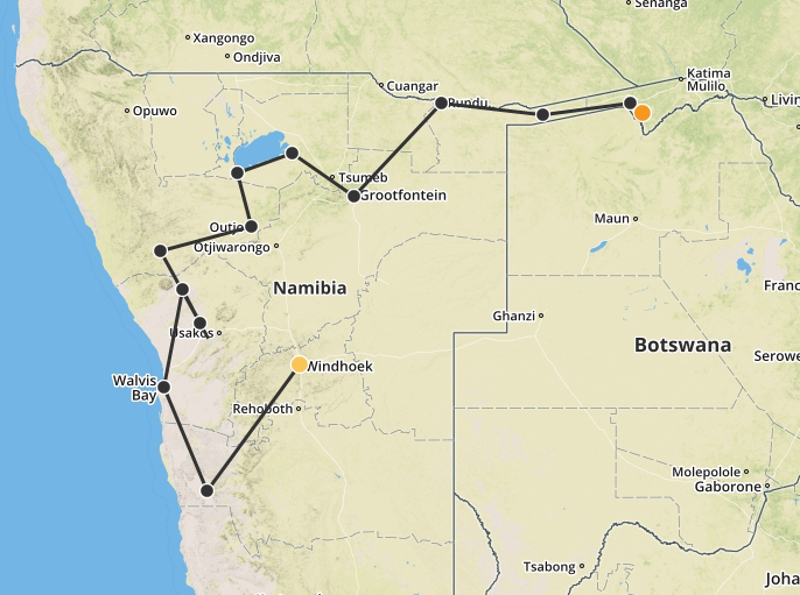
flowing between the Bwabwata National Park on one side and the Mashi Conservancy on the other.
For those not in the know --- like ourselves --- a Conservancy is an enlightened form of management whereby the land and some of its inhabitants are conserved by selling permits to trophy hunters to kill some of its other inhabitants. Those latter inhabitants, quite curiously, are apparently not sophisticated enough to appreciate the enlightenment of this system, and they appear to have adopted an alternative form of conservancy --- possibly wiser --- which centres around their attempting to conserve their lives by fleeing at the first sight or scent of a human. This might explain why a fair number of our photographs seemed to concentrate on their subjects' rumps.
Conservancy matters aside, the main attraction of a Kwando river boat trip is ornithological, as the river abounds with all manner of bird species. As non-ornithologists ourselves, we were gratified to hear our guide referring to what we used to call as "bird and bird and bird and bird" as "swallow and lapwing and martin and egret", or "ibis and goose and oxpecker and eagle", or "heron and harrier and lark and kingfisher" or "jacana and hamerkop and cormorant and parrot and coucal". Actually he preceded each such name with its appropriate epithet, such as Egyptian or African or Blacksmith or Fish, but we were too ignorant to write these down. But even for mammalogists such as ourselves, the river had something to offer, in the form of hippos, buffalos, lechwes, impalas, elephants, baboons, reedbucks, sitatungas (and one small crocodile), although --- as explained before --- these individuals tended to be more distant, more hidden and more flight prone that we had become accustomed to.
On the following day we came face to face with a different creature altogether, far more dangerous and more ravenous --- sand. As we drove along the trails of the Mudumu National Park, we were assaulted by this monster, which attempted to grab our wheels in its mighty claws, suck us down, and bury us in its entrails. But not a fearless driver such as N would succumb to this mighty monster. Brandishing her 4WD cutlass and screaming at the top of her voice "Kadima, Mulilo! Kadima!", she charged at the sand, crushed it under her wheels, and valiantly high-tailed it. But, like a video game's final boss, the sand monster, once overcome, was not vanquished, but rather rose again and again, each time in a more horrifying form than before --- first Sand, then More Sand, then Even More Sand. But N bested them all and we survived to tell the tale.
Yet, in hindsight, it is possible that we were not devoured by the sand monster not because of N's championship-level driving skills, but because the sand monster was no longer hungry, having earlier eaten virtually all the animals in the park, which would explain why we saw so precious little wildlife in our entire midday (10 am to 2 pm) riverside drive --- four female impalas, three scared warthogs, two pale giraffes, and one angry elephant --- with the exception of elephant and lechwe herds that had come to drink near the Hideout.
Accommodations:
- Mavunje Camp (1 night; a nice campsite in the middle of nowhere, and its owner, Dan, is a true treasure trove of useful local knowledge)
Photo captions: (a-d) hippos; (e-h) baboons; (i-j) buffalos; (k-l) lechwes; (m-n) a sitatunga; (o) a reedbuck; (p) a small crocodile; (q-r) a fish eagle; (s) sunset on the Kwando river; (t) the Mudumu No Buffalo Trail; (u) a large herd of elephants; (v-w) two pale giraffes; (x) a colourful bird
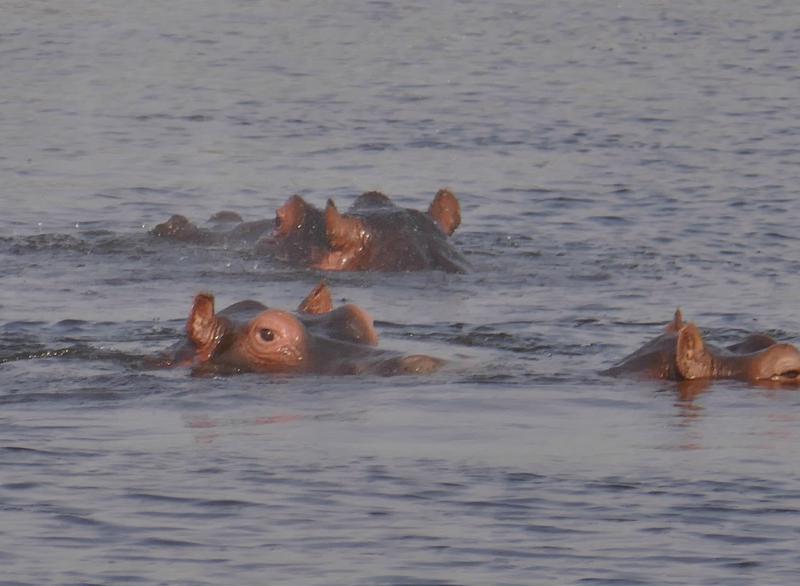
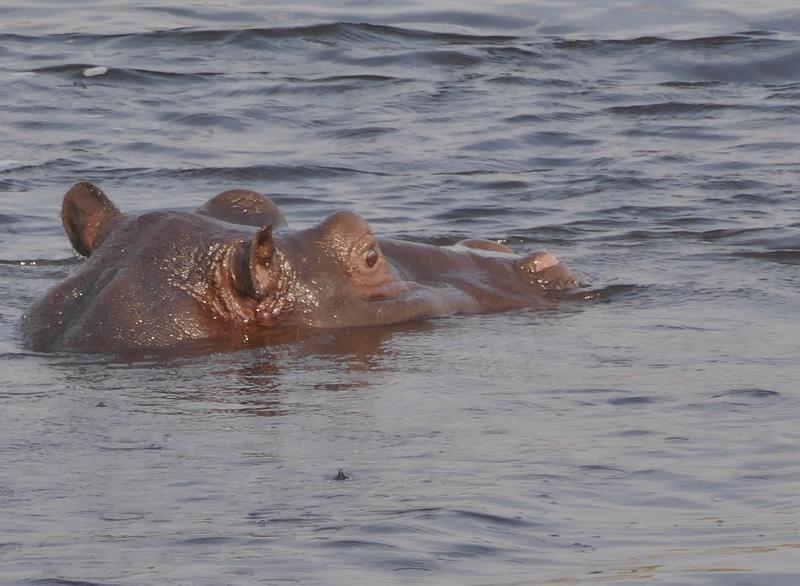
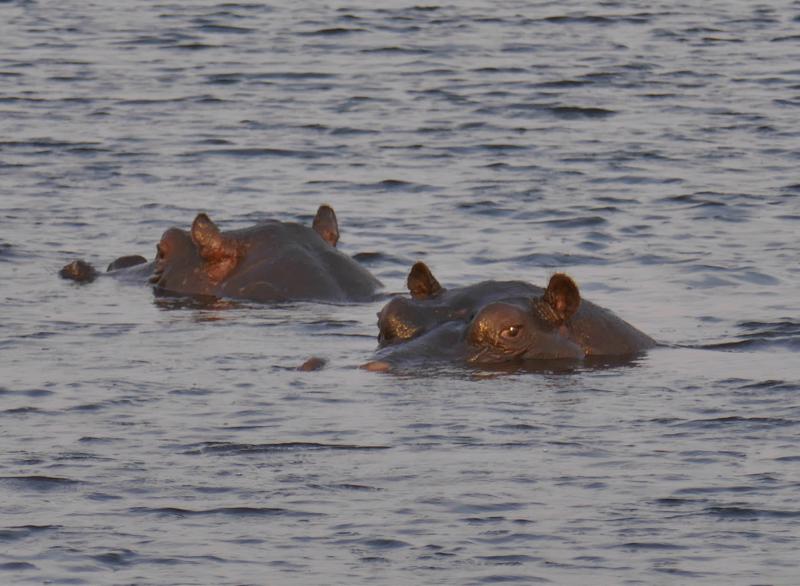
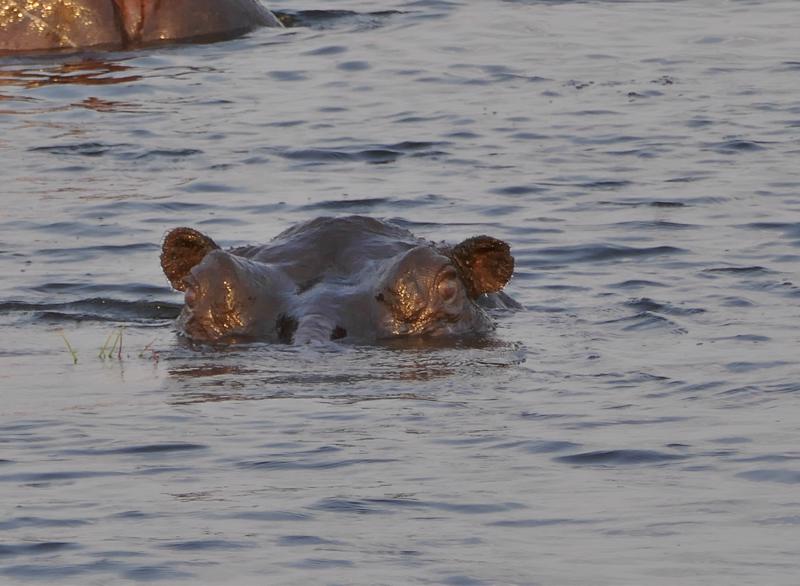
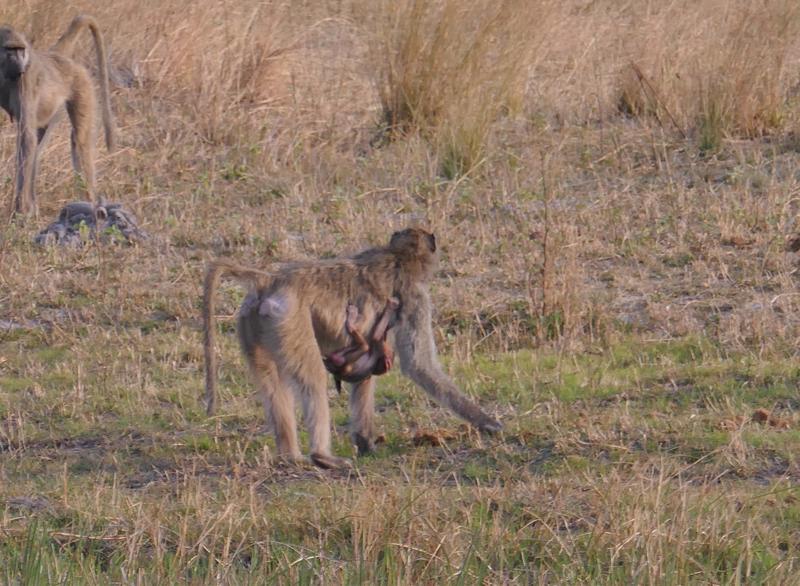
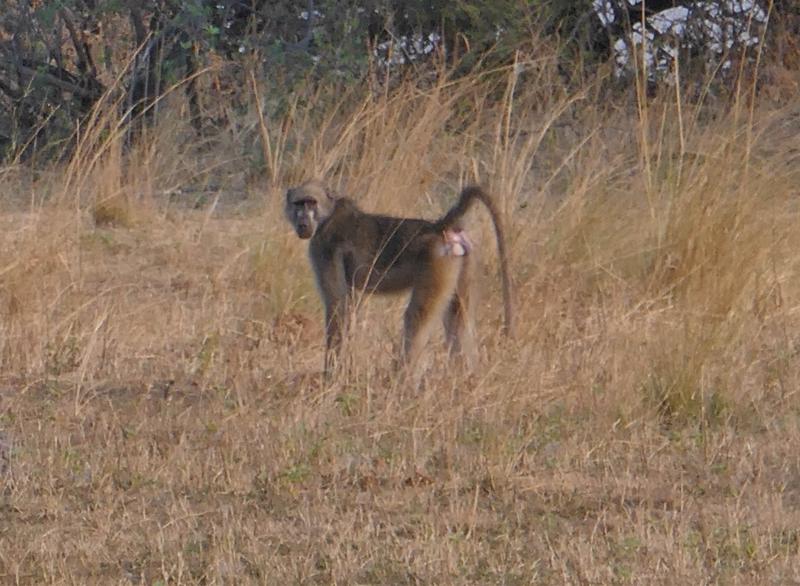
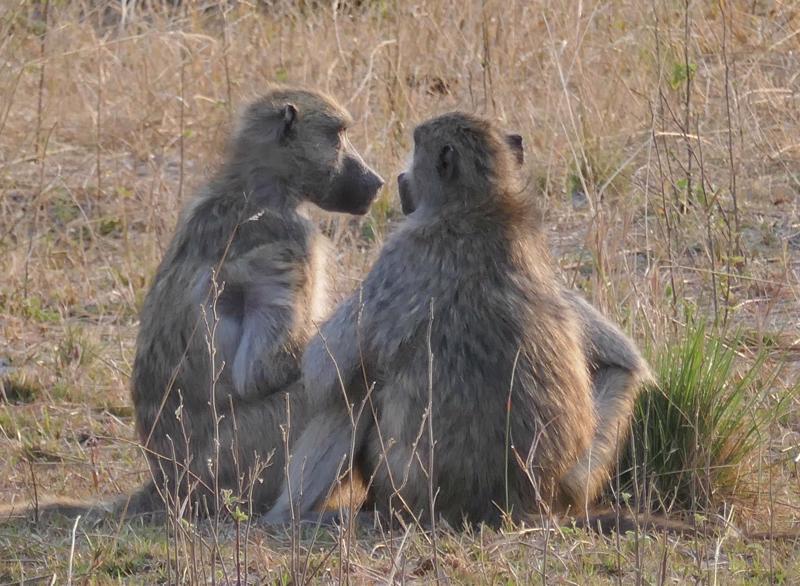
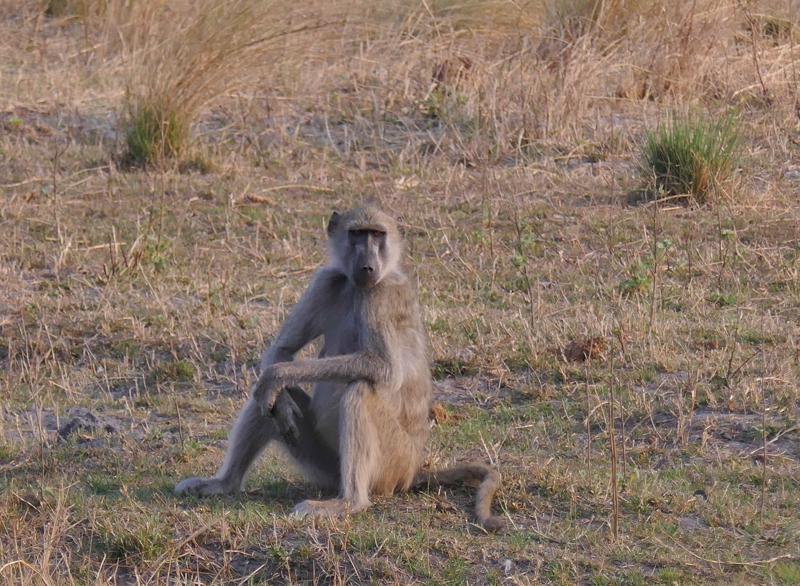
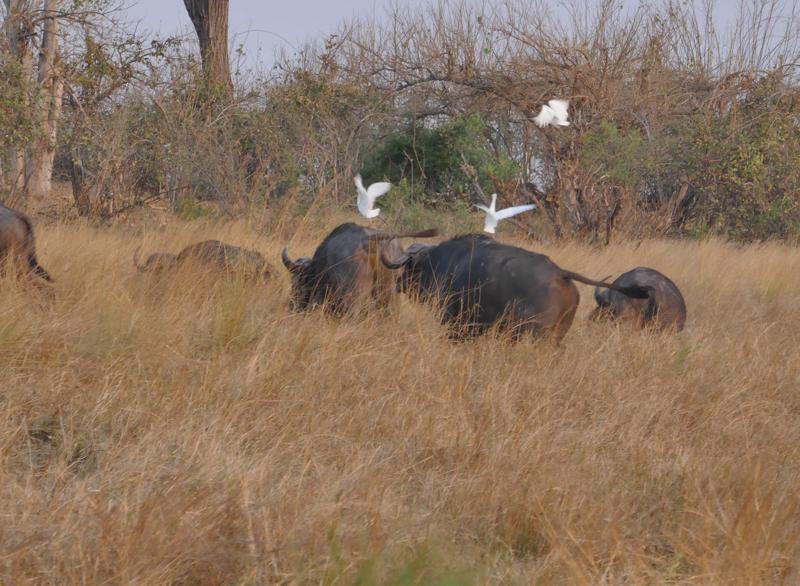

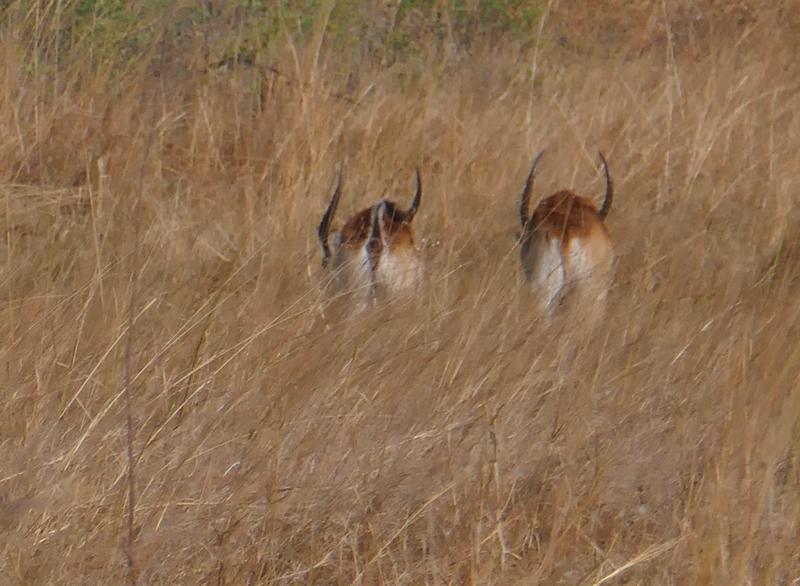
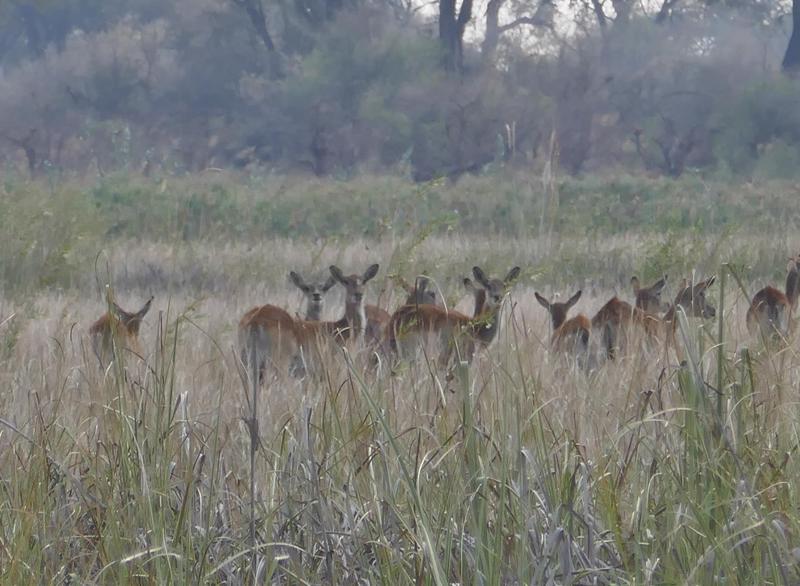
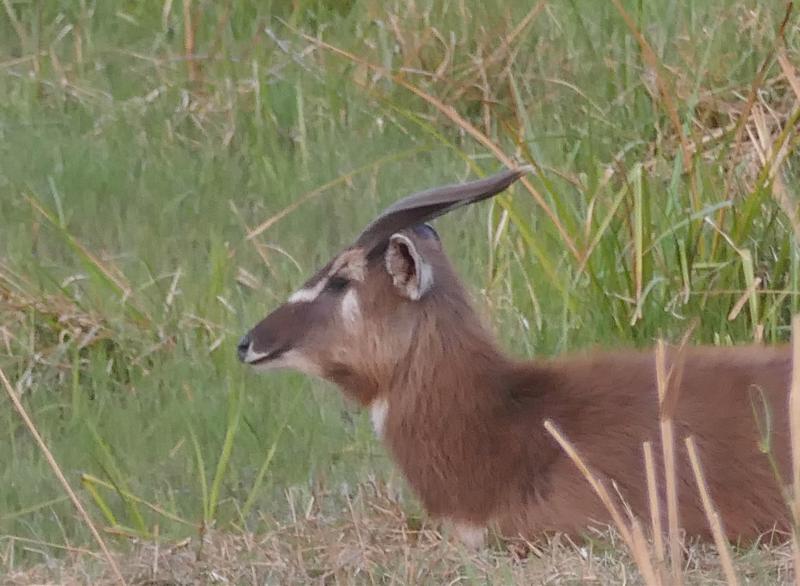
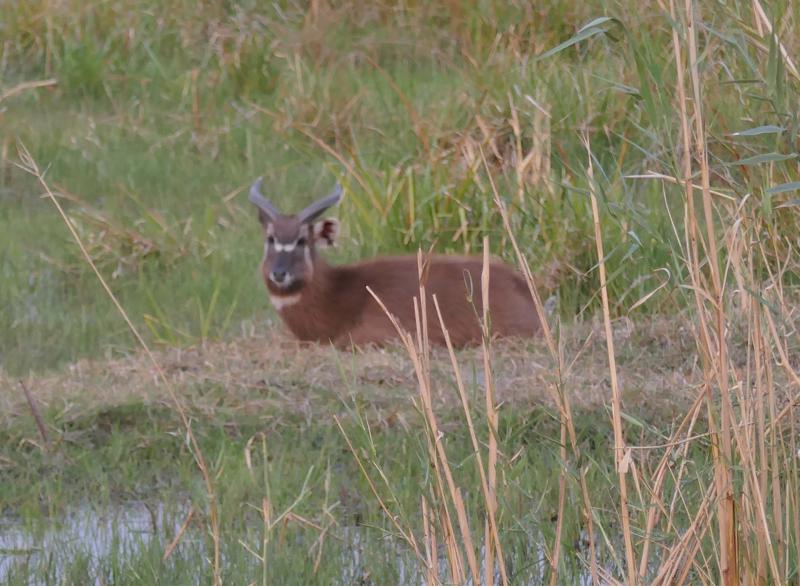
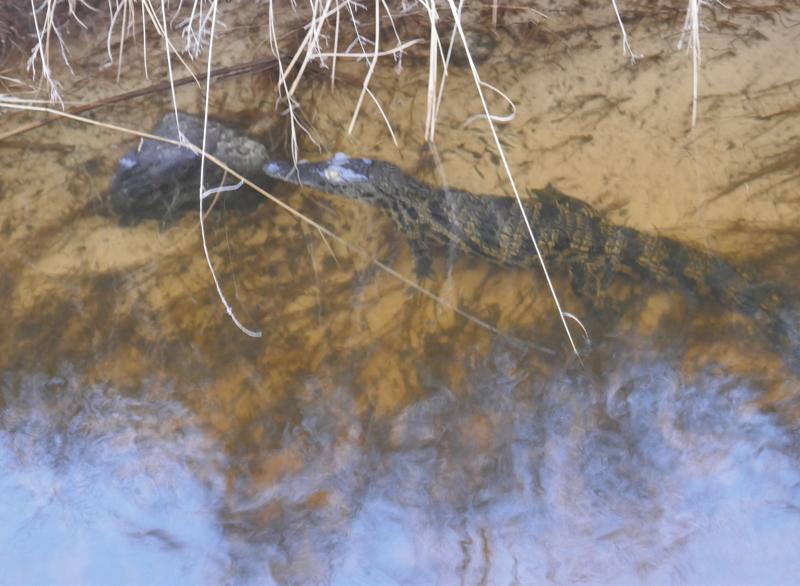
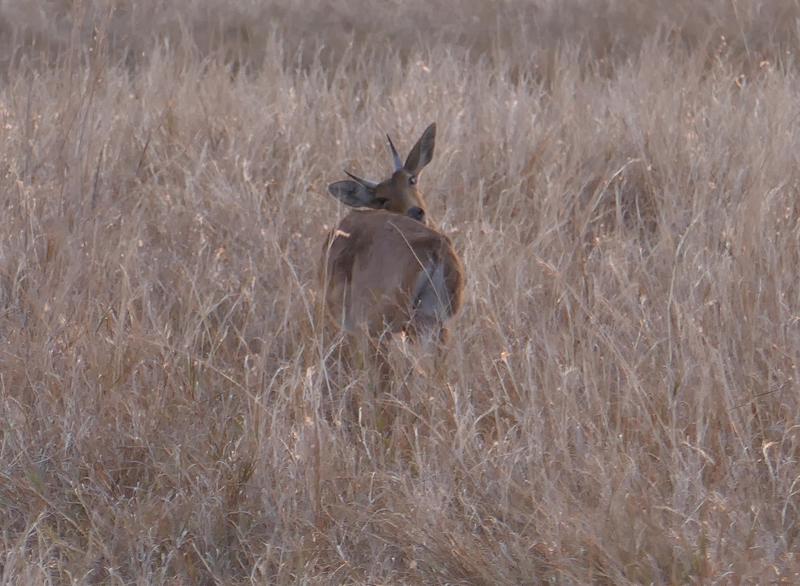
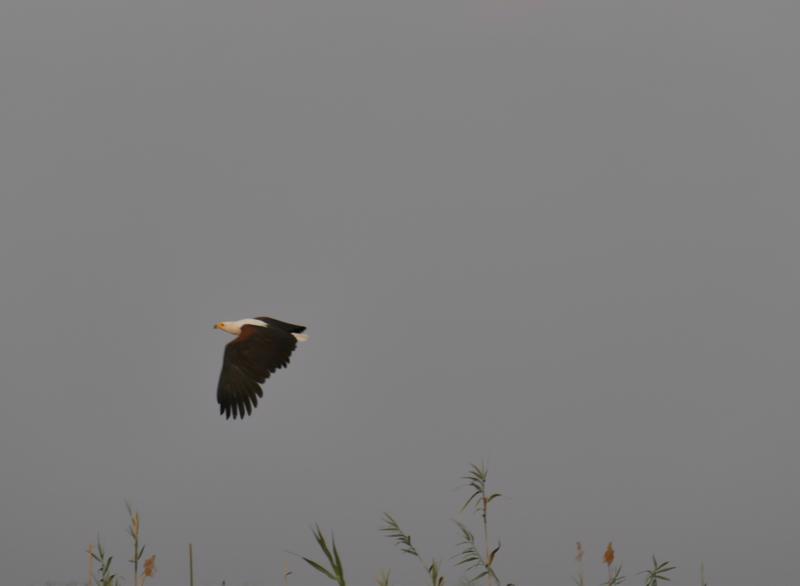
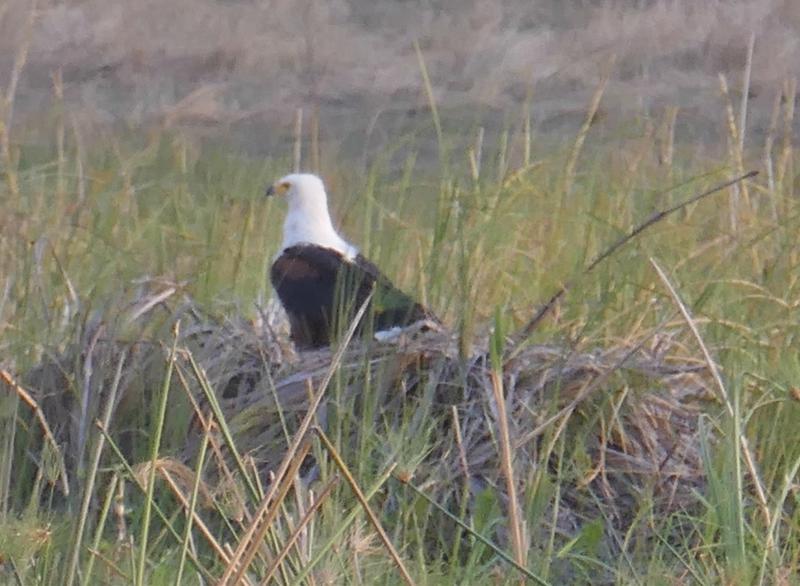
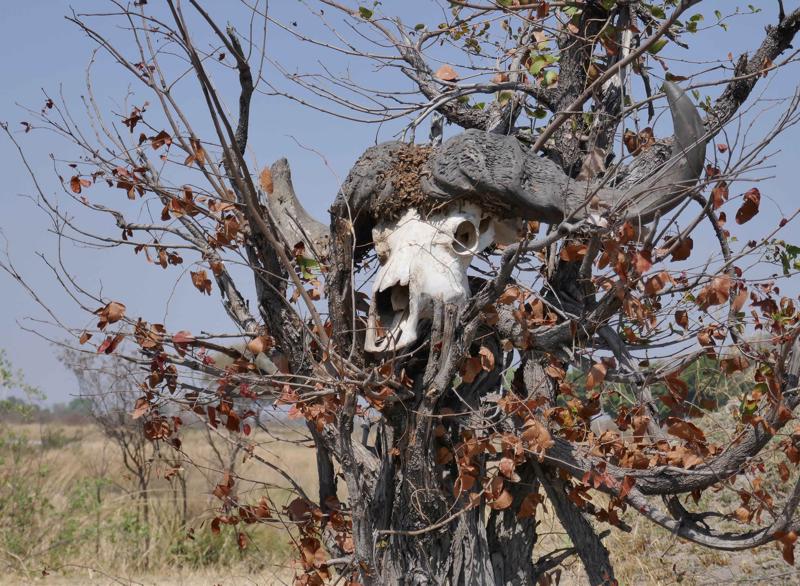
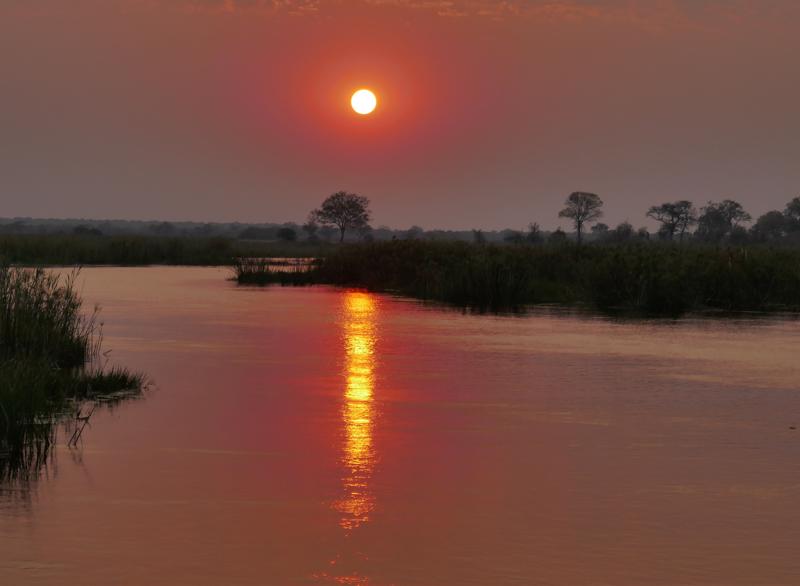
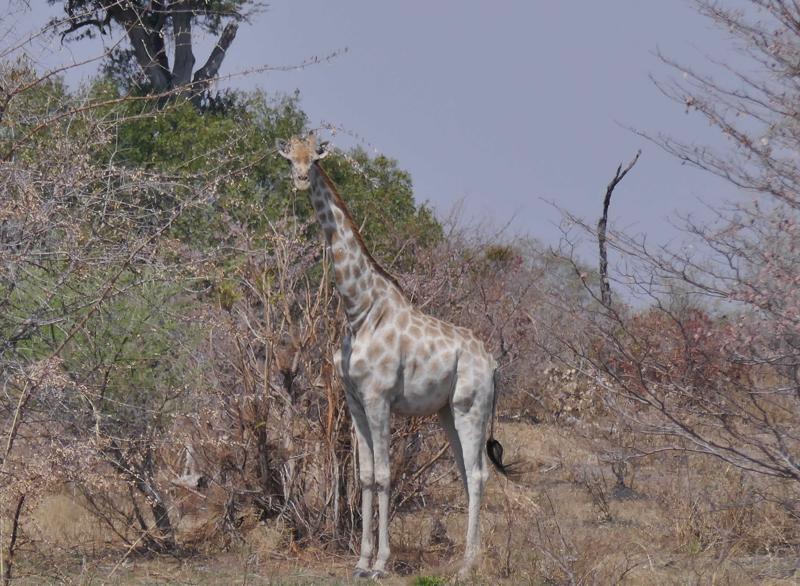
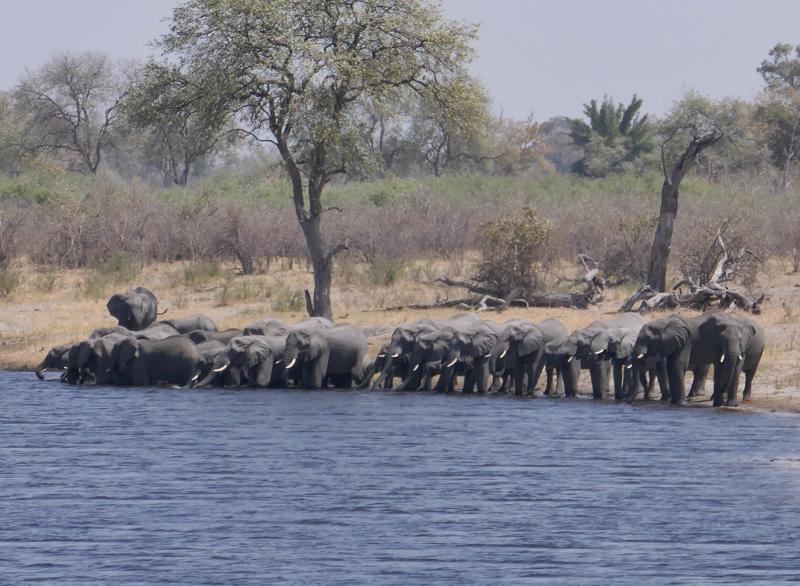
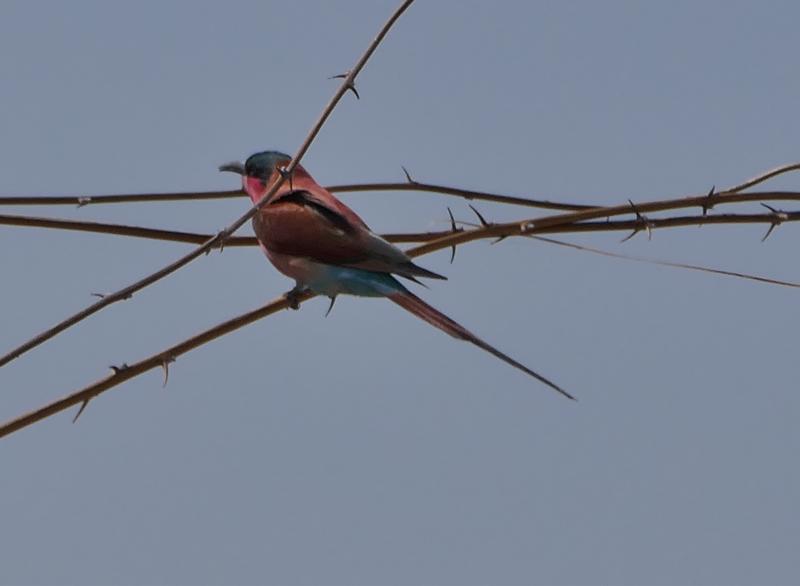
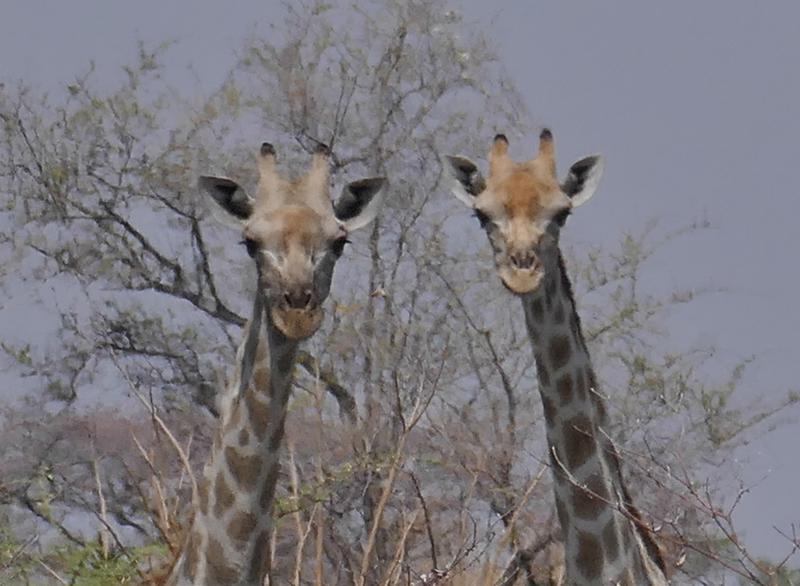
1.
[Namibia] Chapter I: In which N and R kiss each other, the one as woman, the other as man
2.
[Namibia] Chapter II: In which N is unconvinced that she has at last found her ideal diurnal cycle
3.
[Namibia] Chapter III: In which a sandstorm takes place which seems likely to cost no one dear
4.
[Namibia] Chapter IV: In which Walvis Bay astounds us, its pilgrims
5.
[Namibia] Chapter V: In which a new species of roads, unknown to the calm men, appears in Damaraland
6.
[Namibia] Chapter VI: In which we, the travellers, betray a very natural impatience
7.
[Namibia] Chapter VII: Which once more demonstrates the usefulness of water as an aid to eyesight
8.
[Namibia] Chapter VIII: In which N drives rather faster, perhaps, than before
9.
[Namibia] Chapter IX: In which the Kavango and the Mahango prove propitious to our designs
10.
[Namibia] Chapter X: In which we are only too glad to get off with the loss of our air conditioning
11.
[Namibia] Chapter XI: In which N secures a curious means of lodging at a fabulous price
12.
[Botswana] Chapter XII: In which we venture across the Botswana border, and what ensued
13.
[Zimbabwe, Zambia] Chapter XIII: In which N receives a new proof that fortune favours the brave
14.
Summary of Part I and Onwards to Part II
Share your travel adventures like this!
Create your own travel blog in one step
Share with friends and family to follow your journey
Easy set up, no technical knowledge needed and unlimited storage!